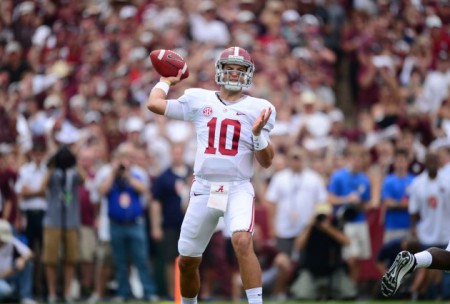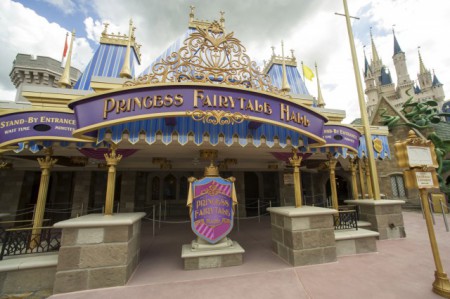Bob Speaks
Today, Bob Iger participated in a question-and-answer session at the Goldman Sachs 22nd Annual Communacopia Conference. Among the topics discussed were the future of ESPN, the result of the investment in parks and resorts, and what Disney will be doing with their capital. Bob recently extended his term as CEO to 2016 after previously planning to step down in 2015. Here are some highlights from his session.
Bob is excited about the collection of Disney’s assets that are all positioned well to take advantage of a robust marketplace that is expanding due to technology. He is also excited about opportunities internationally. This mirrors Bob’s priorities since the day he became CEO of creativity, technology, and international expansion. Also Bob is excited to reap the benefits from making significant investment in parks such as DCA, New Fantasyland Cruise Ships, and Shanghai Disneyland.
While many companies have been selling assets and spinning off parts of their business, Disney has gone against that conventional wisdom and made significant acquisitions. Bob did point out that Disney has sold assets on occasion such as Capital Cities publishing assets and ABC radio due to expected low growth. That being said, Disney is always looking for acquisitions of great brands and technology.
When it comes to capital allocation, 60 percent has been invested back in businesses. 20 percent has been spent on acquisitions and 20 percent back to shareholders through dividends and share repurchase. With no major acquisitions on the horizon and moderating domestic capital investments, Disney is expected to have a high level of free cash flow. Being in this situation, Jay Rasulo announced that Disney will be significantly increasing their share repurchase program. Bob also mentioned that Disney will have some decisions to make in 2016 when they are expected to be making a lot of money with Star Wars, Marvel, and Disney contributing to the bottom line.
Bob believes the 75-dollar cable package is a good value as the quality of programming continues to improve. Bob believes the cable companies need to accept lower margins on video programing as it is a gateway to offering internet and telephony. Of course Bob believes this is a good idea because it will allow Disney to keep getting more money for their channels while not passing on the additional cost to consumers. He also believes that distributors need to allow viewers to watch programming on mobile devices. Bob has not seen evidence of cord-cutting or cord-nevers, but it is important to ensure they are providing a desirable product.
For the Watch apps that allow you to watch Disney cable networks on mobile devices, Disney gets revenue from several sources. First, the distributor pays Disney. Advertising is another source of revenue, but they need a viewership measuring system. Finally, they also can get user data to tailor advertising and product to the viewer.
When asked prospective over the top providers such as Intel and Apple which may offer cable channels, Bob replied they are platform agnostic. They are willing to be on any platform that will pay them as long as they offer a good user experience. Due to the importance of their brands to consumers, they are usually one of the first calls made by folks trying to launch a platform. This allows Disney early exposure to new technologies and consumer trends.
Regarding ESPN’s profitability outlook in light of increasing sports rights costs and resistance to further affiliate fee increases, Bob mentioned that ESPN has made long term deals with their spots rights providers and many of their distributors. This gives Disney a long-term outlook on the future of the business. He also believes that advertising revenue will increase given the strength of their programming slate.
The investment Disney has made in their theme parks seems to be paying off. The Magic Kingdom had record attendance in the third quarter due to New Fantasyland and its not even complete. Avatar land is expected to grow WDW as well. Hong Kong Disneyland has had success with their three new lands and will continue to grow. All that being said, Bob is most excited about Shanghai Disneyland, which will be linked to major population centers by high-speed rail.
Over 200,000 Guests have used MyMagic+ and will be fully rolled out in the coming months. The most popular feature is being able to book their favorite attractions in advance. Will be used at other theme parks around the world. Theme parks are at pre-recession margins excluding the major new initiatives which Bob believes will eventually push them past pre-recession levels.
Bob was also asked to explain their interactive business. Disney Interactive is split in two. Online is designed to market and sell Disney products. The gaming side is split to mobile, social, and console. So far, Disney Infinity sales have been encouraging. The title has attracted more core-gamers than expected.
Despite international growth being a priority, growing ESPN globally is difficult, though they have done well in Latin America. In Europe it is difficult due to only being able to sign the Premier League, the most important sport in the region, for 3-years. ESPN tried but struggled to find profitability.
The question was raised about when will non-television advertising be significant to ESPN. Bob replied by stating that 100% of ESPN advertising is sold multi-platform including television, radio, magazine and Internet. That being said, Bob expects it will take 3-5 years before off-channel advertising makes a major impact.
Bob echoed many of the same thoughts and points that Jay Rasulo addressed last week. Between both sessions it is clear that they know 2015 will be a big year for Disney. With record revenue expected they are now strategizing what to do with all the money they make. They will not be hoarding cash, but reinvestment, dividend increases, acquisitions, and share repurchase are all on the table. The decisions they make on this issue will undoubtedly shape the post-Iger era of Disney.






